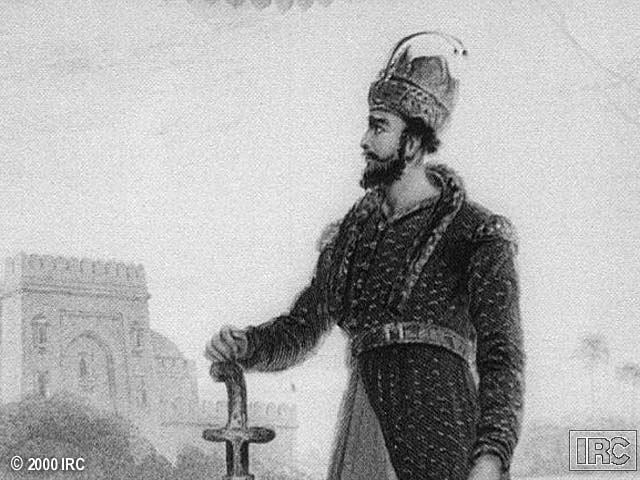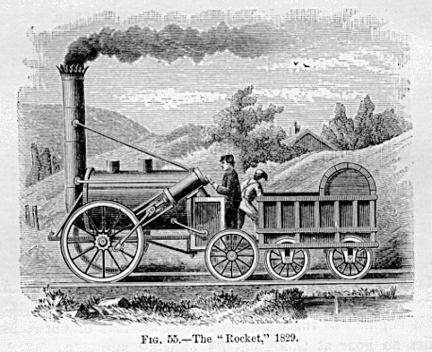Unrest
and Revolution
For the next
several decades following the suppression of the Cruistians, life
in Andrea seemed to be returning to normal. In the Northern half
of the Empire all things foreign were rejected as mobs agitated
by the agents of the emperor hounded out those who had done business
with the foreigners. Under the direction of the Imperial Bureaucracy,
an attempt to recapture the ideal of Shangal society was made.
Art and poetry praising the ancestral ways were prominent, and
innovation was discouraged. Ownership of firearms and swords was
also prohibited, in attempt to prevent another civil war.
 The
exceptions to this were the frontier and the Velkora Duchy. Life
on the southern frontier had always been hard, but new technologies
imported from abroad made things somewhat easier for the inhabitants.
As a result, there was a small population boom on the frontier,
even as previously uninhabited lands were now being placed under
cultivation. In Velkora, the Duke had only maintained minimal
trade with the East, despite the open mandate granted him by the
Emperor. When Duke Wearaxx died in 1211, his young grandson, Andros
Velkora inherited his lands at the age of 17. By this time the
Vekora lands had swelled to include the new farmland to the south
as well as a region of the highlands captured by Duke Wearaxx
during skirmishes with the aboriginals. Duke Andros had been well
educated by Doranian tutors, and could see the potential of his
Duchy.
The
exceptions to this were the frontier and the Velkora Duchy. Life
on the southern frontier had always been hard, but new technologies
imported from abroad made things somewhat easier for the inhabitants.
As a result, there was a small population boom on the frontier,
even as previously uninhabited lands were now being placed under
cultivation. In Velkora, the Duke had only maintained minimal
trade with the East, despite the open mandate granted him by the
Emperor. When Duke Wearaxx died in 1211, his young grandson, Andros
Velkora inherited his lands at the age of 17. By this time the
Vekora lands had swelled to include the new farmland to the south
as well as a region of the highlands captured by Duke Wearaxx
during skirmishes with the aboriginals. Duke Andros had been well
educated by Doranian tutors, and could see the potential of his
Duchy.
In 1213,
Duke Andros sent several trading missions abroad without the knowledge
of the Emperor. While most of these proved fruitless, the missions
to Monte Doria and Tuevan proved successful. As a result, Vekora
became the center of trade with the Shangal Empire, and goods
and ideas flowed into the Duchy. In 1223, Duke Andros founded
the City of Androas (today Andrea City) to accommodate the increased
trade. The city was  designed
as a modern Doranian city rather than a Shangal one, and experts
were brought in to set up manufactories, mines and a small railroad.
In 1225, bands of aboriginals began raiding the borders of the
Duchy, attempting to reclaim the lands taken from them by Andros's
grandfather. In response, Duke Andros lead a mixed force of Monte
Dorian mercenaries and local militia men armed with imported weapons
against them. The result was a spectacular success for Andros.
Impressed with the Monte Dorian soldiers, he hired several to
stay on and train a citizen militia that could guard the borders
against future incursions. At the same time, he set up a war college
(today Velkora College) to train future leaders. A young student
in the artillery program by the name of Hui Wei (later General
Wei, Director of Research and Procurement, 1244-1267) made several
improvements to artillery that were later copied into personal
firearms as well. The two primary contributions Wei made were
the introduction of an early breechloading system and the use
of interchangeable parts to improve maintenance.
designed
as a modern Doranian city rather than a Shangal one, and experts
were brought in to set up manufactories, mines and a small railroad.
In 1225, bands of aboriginals began raiding the borders of the
Duchy, attempting to reclaim the lands taken from them by Andros's
grandfather. In response, Duke Andros lead a mixed force of Monte
Dorian mercenaries and local militia men armed with imported weapons
against them. The result was a spectacular success for Andros.
Impressed with the Monte Dorian soldiers, he hired several to
stay on and train a citizen militia that could guard the borders
against future incursions. At the same time, he set up a war college
(today Velkora College) to train future leaders. A young student
in the artillery program by the name of Hui Wei (later General
Wei, Director of Research and Procurement, 1244-1267) made several
improvements to artillery that were later copied into personal
firearms as well. The two primary contributions Wei made were
the introduction of an early breechloading system and the use
of interchangeable parts to improve maintenance.
By 1238,
over 200,000 men had been trained by the program and were given
rifles with the expectation that they defend the Duchy. During
this time, the railroad had expanded to cover all of Velkora,
numerous mines and manufactories had rendered the production of
other parts of the Empire obsolete. Several neighboring Duchies
had also copied the Velkoran reforms, with varying degrees of
success. Not everyone was happy with the  Duchy's
success, however. The prosperity of Velkora and it's neighbors
was causing hardship in the north. The skilled craftsmen of the
Northern Duchies were being undersold by mass-produced goods from
the south. The food which the north had long sold at great profit
to the south was also no longer needed, as the new farming methods
on the southern plains allowed the production of wheat and corn
that was outselling Northern rice across the Empire. On July 18,
1238, Emperor Kai Sun Li decided to do something about the complains
of the Northern Dukes. He issued an edict directing Duke Andros
and the Southern Duchies to dismantle their factories, mines,
and railroads, and return to the traditional and proper way of
life.
Duchy's
success, however. The prosperity of Velkora and it's neighbors
was causing hardship in the north. The skilled craftsmen of the
Northern Duchies were being undersold by mass-produced goods from
the south. The food which the north had long sold at great profit
to the south was also no longer needed, as the new farming methods
on the southern plains allowed the production of wheat and corn
that was outselling Northern rice across the Empire. On July 18,
1238, Emperor Kai Sun Li decided to do something about the complains
of the Northern Dukes. He issued an edict directing Duke Andros
and the Southern Duchies to dismantle their factories, mines,
and railroads, and return to the traditional and proper way of
life.
Duke Andros
sent a letter begging the Emperor to reconsider, telling him that
the wealth of Velkora was the wealth of the Empire. He argued
that the other Duchies could copy Velkora, and that poverty and
injustice could be eliminated. In response, the Emperor sent his
personal guard to arrest Duke Andros and to bring him back to
Sangpan to be tried for treason. On September 4, 1238 3,000 Imperial
Guard imprisoned Duke Andros in his Ducal palace. The next day,
50,000 militia men gathered and demanded his release. The Imperial
Guard ordered them to disburse, and formed ranks to expel them.
As the Imperial Guard closed on the protesters, a single shot
rang out. Seven minutes later, all 3,000 guardsmen lay dead and
the Andrean Revolution had begun.

